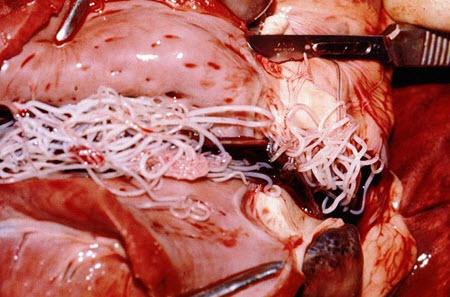RAGOM strongly advocates heartworm testing and prevention—in fact, our adoption agreement requires that adopters will keep their dog on a heartworm prevention protocol. Heartworm disease is potentially life-threatening, but it is completely preventable by administering monthly heartworm preventative medication.
Heartworms are transmitted by the bite of an infected mosquito, and heartworm disease has been reported in all 50 states. Full-stage heartworm disease can only be prevented by heartworm medications that kill off the immature larvae in the dog’s body before they become adults. Prevention is much easier, safer for your dog, and less expensive than treating a case of heartworm disease.
If your dog is not protected by monthly heartworm preventive medications, he or she is at definite risk of becoming infected with heartworms. This potentially fatal disease can result in adult heartworms living in your dog’s lungs and heart, causing many serious health problems.
Dogs infected with heartworms cough (sometimes expelling blood) and tire easily. Left untreated, heartworms will multiply and grow—sometimes up to 12 inches long—putting considerable stress on your dog’s heart and lungs.

Treating a dog for heartworm disease can cost $2,000 to $3,000 depending on the stage of the disease and requires the dog to be on strict crate rest while their body eliminates the decomposing worms. Heartworm treatment is lengthy and is physically taxing and uncomfortable for the dog.
If you have not been keeping your dog on heartworm preventatives, please begin right away. However, it is important to first have your vet test your dog for heartworms. Giving heartworm prevention medication to a dog that already has heartworm disease can be very risky and further compromise your dog’s health.
RAGOM recommends that you talk to your vet about heartworm disease to learn more about symptoms, treatment, and most importantly—prevention.

